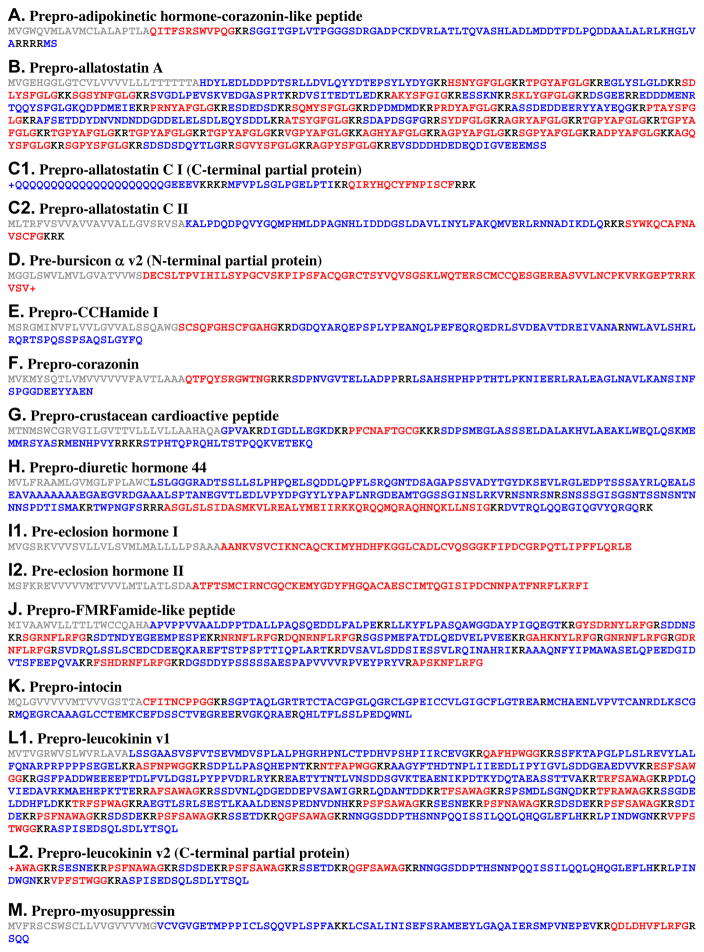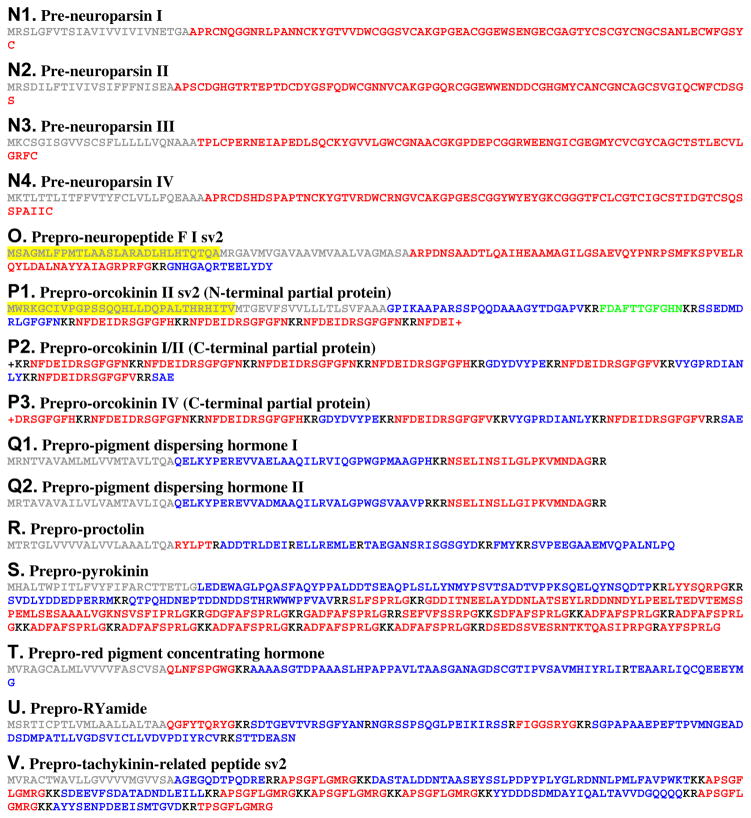Figure 2.
Putative Homarus americanus pre/preprohormones deduced from transcriptome shotgun assembly sequence data. This figure does not include predicted preprohormones for which multiple putative splice variants were identified in the eyestalk ganglia transcriptome. (A) Prepro-adipokinetic hormone-corazonin-like peptide. (B) Prepro-allatostatin A. (C1) The carboxyl (C)-terminal portion of prepro-allatostatin C I. (C2) Prepro-allatostatin C II. (D) The amino (N)-terminal portion of pre-bursicon α variant (v) 2. (E). Prepro-CCHamide I. (F) Prepro-corazonin. (G) Prepro-crustacean cardioactive peptide. (H). Prepro-diuretic hormone 44. (I1) Pre-eclosion hormone I. (I2) Pre-eclosion hormone II. (J) Prepro-FMRFamide-like peptide. (K) Prepro-intocin. (L1) Prepro-leucokinin v1. (L2) The C-terminal portion of prepro-leucokinin v2. (M) Prepro-myosuppressin. (N1) Pre-neuroparsin I. (N2) Pre-neuroparsin II. (N3) Pre-neuroparsin III. (N4) Pre-neuroparsin IV. (O) Prepro-neuropeptide F splice variant (sv) 2. (P1) The N-terminal portion of prepro-orcokinin II sv2. (P2) The C-terminal portion of prepro-orcokinin I/II. (P3) The C-terminal portion of prepro-orcokinin IV. (Q1) Prepro-pigment dispersing hormone I. (Q2) Prepro-pigment dispersing hormone II. (R) Prepro-proctolin. (S) Prepro-pyrokinin. (T) Prepro-red pigment concentrating hormone. (U) Prepro-RYamide. (V) Prepro-tachykinin-related peptide sv2. In this figure, signal peptides are shown in gray, while all mono/dibasic cleavage loci are shown in black. For each sequence, the isoform(s) of the peptide for which the precursor is named is/are shown in red, with all linker/precursor related peptides shown in blue. The “+” symbol indicate the presence of additional, unknown, amino acid residues at the N- and/or C-termini of the protein in question. It should be noted that there is an N-terminal extension prior to theorized start of the signal peptide in the neuropeptide F and orcokinin precursors shown in O and P1 (highlighted in yellow in each panel). These extensions may be the result of an artifact in the process of assembling the transcript encoding each of these proteins, or may have true biological significance, e.g., they may function as potential regulatory elements. In P1, an isoform of orcomyotropin has been colored green.


